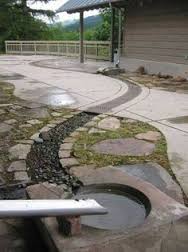Conventional vs Progressive Stormwater Management - Part One
Fusing Environment, Art and Stormwater Management
Part One – What is it?
The ‘new’ emergence of Green Infrastructure is really not so new but is experiencing a surge in the practice of Landscape Architecture and Civil Engineering. Green Infrastructure is a growing field that marries practical and functional stormwater management practices with an environmentally sensitive approach that makes it more sustainable than what I refer to as Conventional Best Management Practices (BMP) and at its best infuses art and an artful eye for greater aesthetic appeal and cultural strength.
Green Infrastructure, also known as Low Impact Development (LID) and Artful Rainwater Design (ARD), strives to replace and mimic natural processes lost in construction while creating beautiful and socially functioning landscapes. Conventional BMP, which are often termed as “Gray Infrastructure”, allows for little creativity and is largely pipe, cobble and gravel intensive in its construction. The Green Infrastructure approach does not disregard conventional BMP as its tools are still of value in situations where Green Infrastructure is infeasible due to space or other considerations. The difference between conventional BMP and Green Infrastructure, ARD and LID is that the later approaches take on a more environmentally sound and sustainable aspect. The restoration, rehabilitation and enhancement of natural systems are key elements to the success of Green Infrastructure and LID. ARD really brings focus to the creative aspect integrating artistic values and artistic elements into the mix.
Design: Dan Corson – Jones & Jones
Source: Artful Rainwater Design – Echols & Pennypacker
Project: ‘Future Nature’ by Adrian Hallam & Chirs Arrowsmith with Nigel Dunnet
Photographer: unknown
Borrowing from the book Artful Rainwater Design by Stuart Echols an Eliza Pennypacker, two general components of ARD help define goals for the management of stormwater: ‘Amenity’ and ‘Utility’. While each of these has specific goals, the outcomes of management techniques utilized may serve multiple purposes. ‘Amenity’ refers to the potentials for elements of Education, Recreation, Safety, Public Relations and Aesthetic Richness. ‘Utility’ refers to features that serve in Reduction of pollutant loads, Reduction of damage from runoff and erosion, Safely moving, controlling and containing water, Capture and Reuse for landscape and other uses, and finally Restoration and Creation of Habitats – plant, wetland, fish and wildlife. These are especially important aspects of the mountain environment.
Please see Part Two for more...



